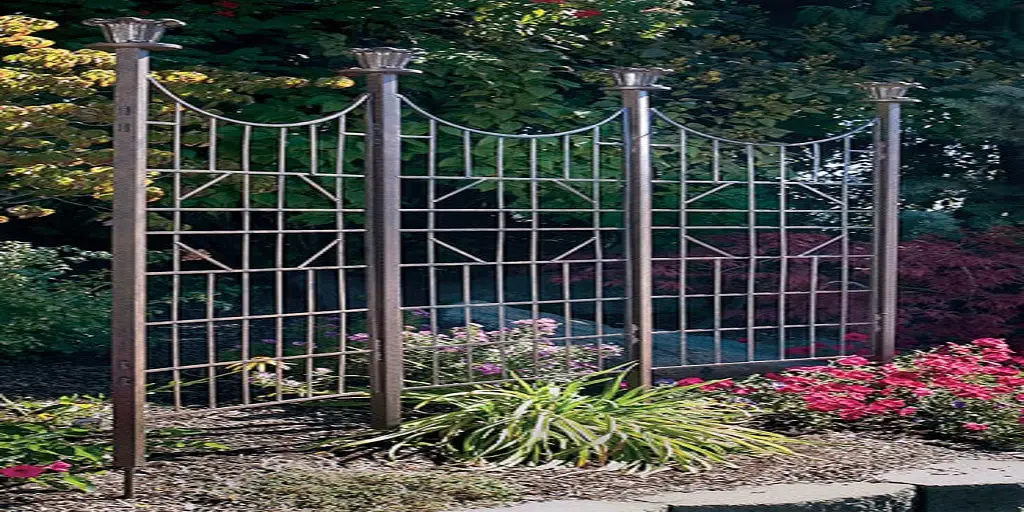Treillage has been considered a form of art by many in the past, including the royalty back in the days of the Ancien Régime. The gardens that surround the Palace of Versailles in France are among the most famous examples of the synergy created between architecture and gardening.
This principle was, of course, later adopted by home gardeners who enjoy the decorative structural elements of trellises, want to show off their plants, or both. The latticed design of plant trellises are intended to provide support to beautiful climbing plants for different purposes.
Ornamental Plant Trellises
Trellises serve as a display surface so your plants get a more prominent spot in your garden. This is especially true for obelisks and pyramids that can help you accentuate certain features or plants in your garden.
Wall trellises usually provide ways to disguise unsightly or plain walls, giving your plants the opportunity to get more sunlight and better airflow. Trellises are great for annuals and small varieties of flowers or smaller plant varieties.
Flat trellises can also be used for dividing spaces and even providing some privacy if the plant is capable of filling the trellis with thick foliage. Hydrangeas and honeysuckles are favorites among those who love climbing varieties that create impressive and beautiful thick walls full of life.
Large Plant Trellises
Large plant trellises can support large plant vines that may not be suitable to grow on a regular plant cage but can have a tendency to sprawl along the ground if unsupported. A plant trellis provides a means of support for these plant varieties and prevents them from taking over your garden.
Trellises also provide an excellent hiding place for more aggressive plant climbers such as clematis, wisteria, and climbing roses to allow you to enjoy the ornamental qualities of these plant varieties without having them attack and overtake the rest of your foliage plants.
Growing Vegetables
Space is often a problem for many avid gardeners who not only love to have more in-house green spaces, but also understand the benefits of growing their own food.
A clear advantage of growing vegetables on a vertical plant trellis is the ability to grow more food in less space. Instead of having your bean or cucumber plants spread evenly throughout your limited patch of rich land, you can vine them up a trellis and harvest up to three times as much food, according to a Cornell University study on vegetable yields. Harvesting also becomes easier with vertically placed plants. You no longer need to bend over to pick up your peas; they are now at your level and within sight.
Trellises also help reduce insect damage and diseases by improving air circulation and keeping your plants away from soil impurities. Lastly, your vegetables will always grow straight and free of dirt, ready for consumption.
However, if you want sturdy structures that can hold your foliage or produce, and also add stunning ornamental elements to your garden, you need a high-quality plant trellis. You can find exquisite and resistant trellises at hpotter.com. They have heavy-duty wrought iron trellises, wall trellises, metal garden trellises, and garden obelisks that capture the original essence of treillage. Contact them at 208-640-4206 if you have any questions!
For more information about Copper Planter and Tall Indoor Planters Please visit: H Potter Marketplace Inc.
0






